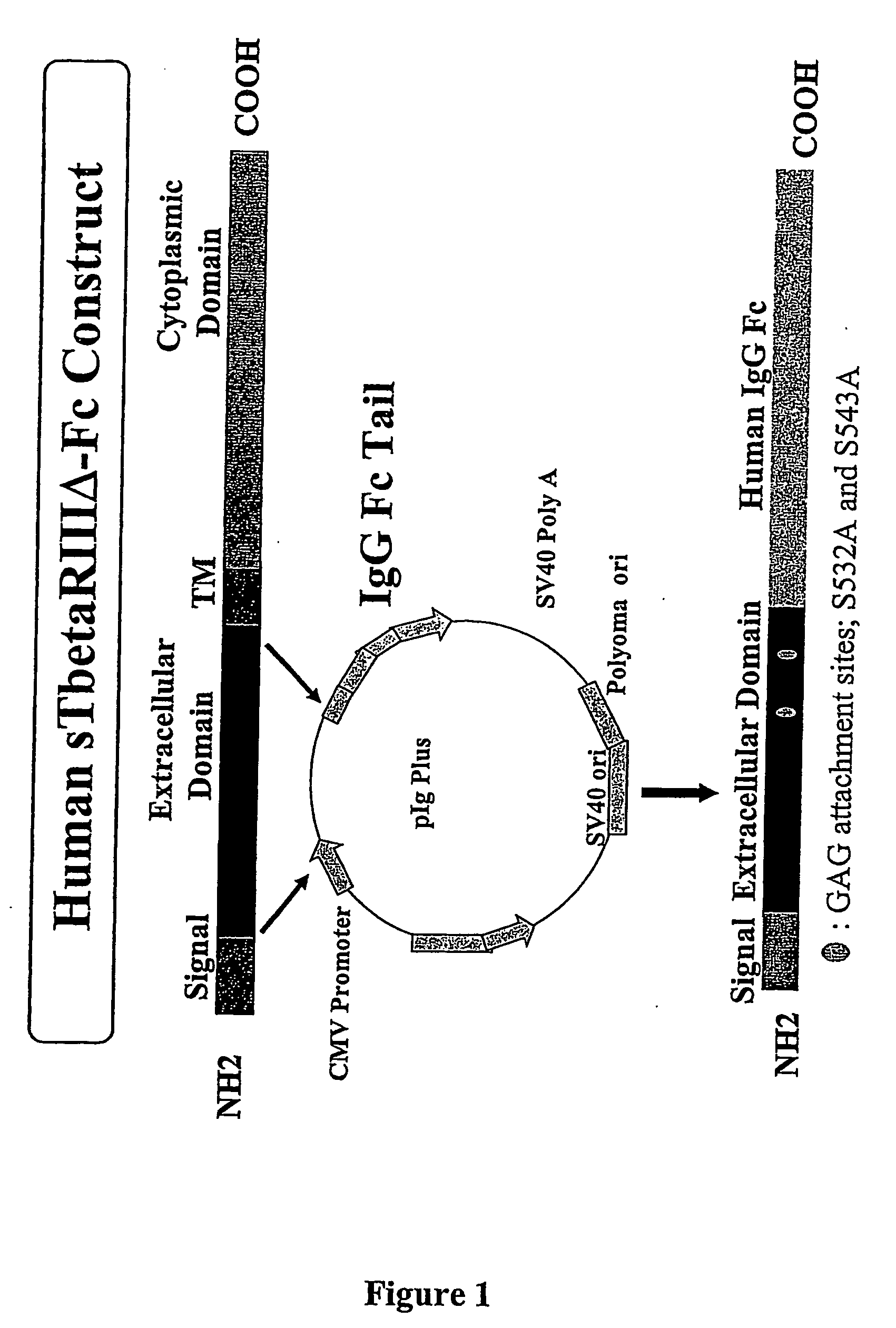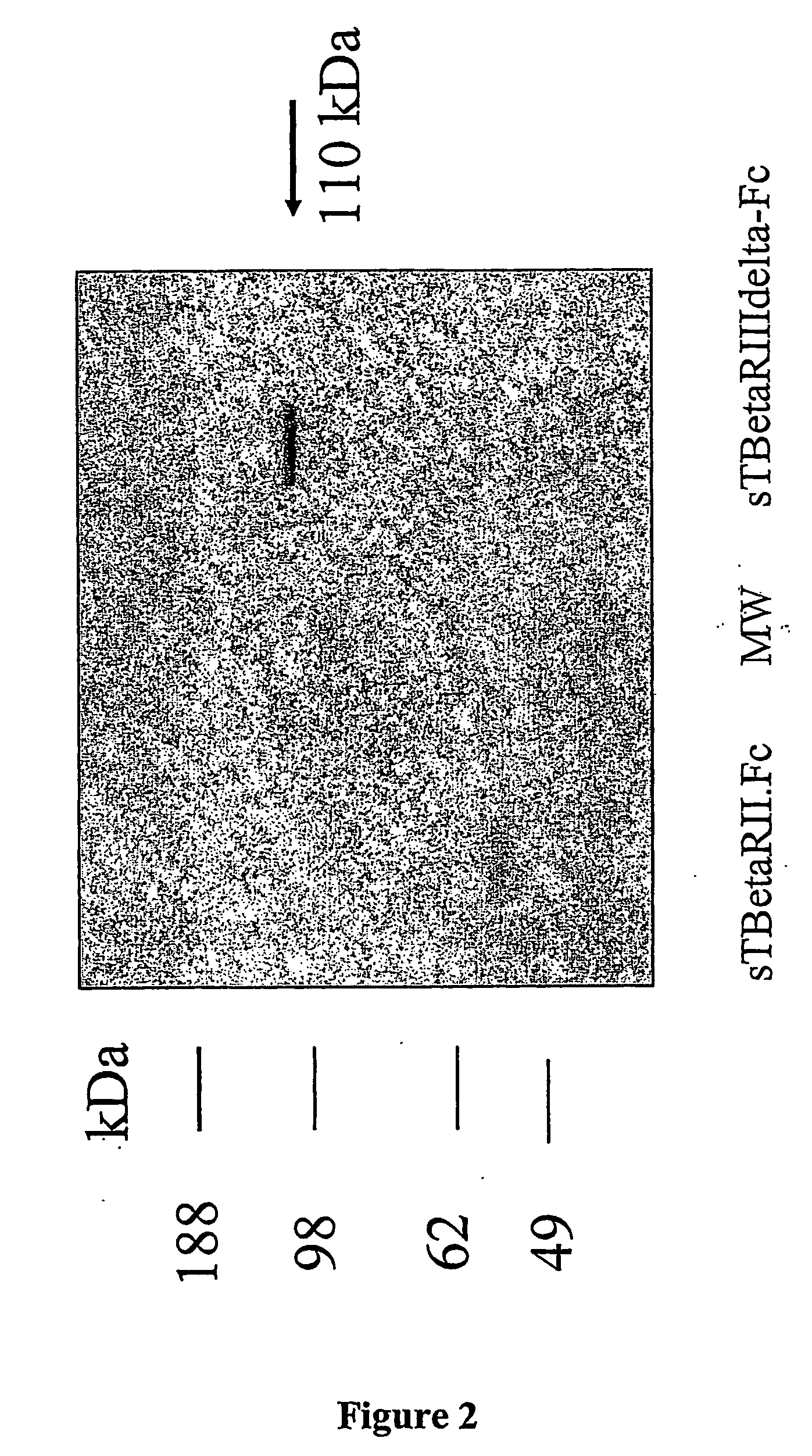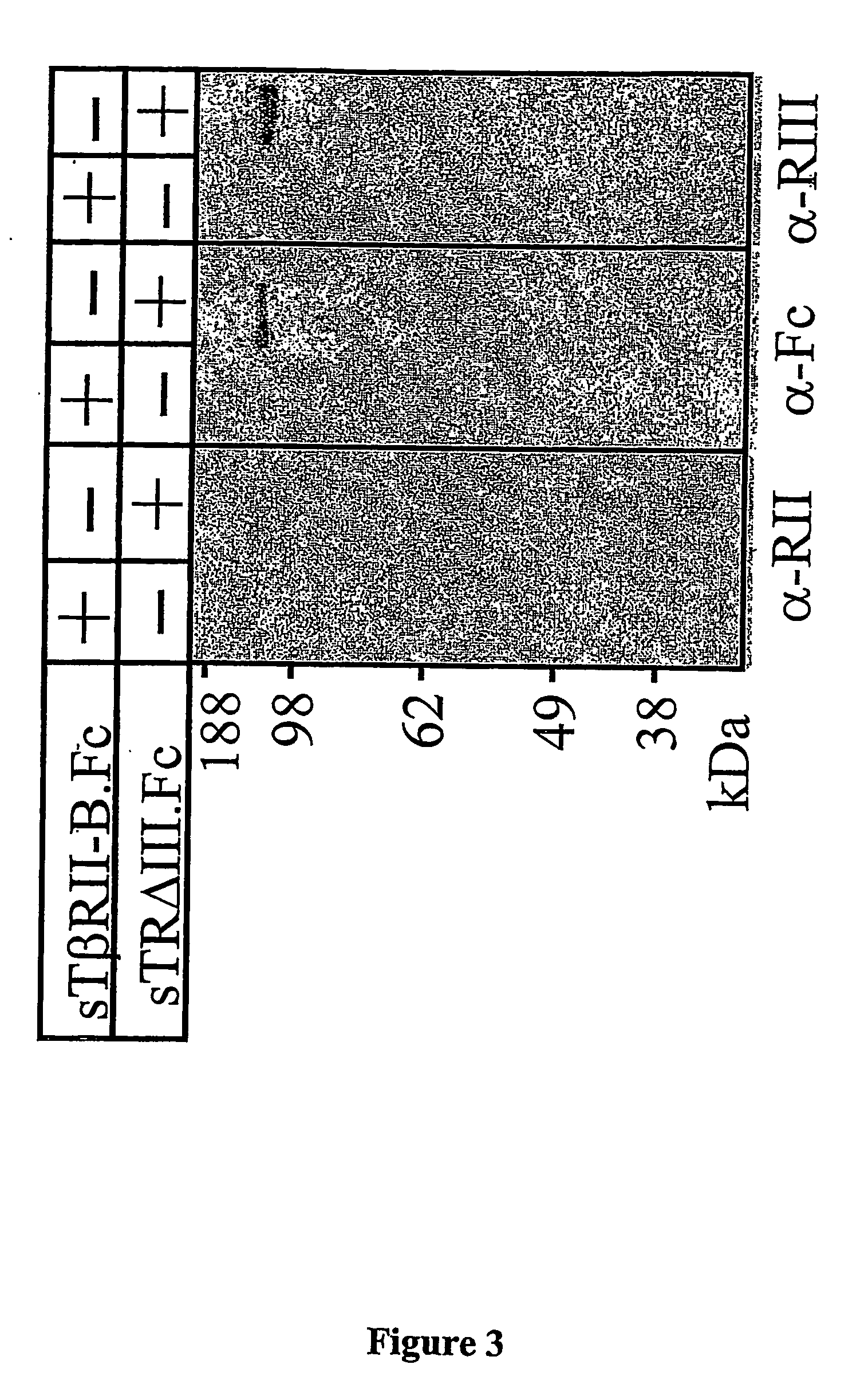Soluble tgf-b type III receptor fusion proteins
- Summary
- Abstract
- Description
- Claims
- Application Information
AI Technical Summary
Benefits of technology
Problems solved by technology
Method used
Image
Examples
example 1
Recombinant cDNA Construct
[0171] A mutant with serine to alanine mutations at positions 535 and 546, eliminating the two glycosaminoglycan attachment sites, was constructed by PCR mutagenesis.
[0172] cDNA molecule—The cDNA encoding the extracellular domain of human TGF-β type III receptor was amplified by PCR from the plasmid pcDNA 1 (Invitrogen, San Diego, Calif.), which contained a full-length cDNA of the receptor (with minimal 5′- and 3′-untranslated regions).
[0173] The primers used to generate the Ser to Ala change were: (1) HD3K-HBF (with a Hind III site at the 5′-end) and HBS532A-R to generate one-half of the extracellular domain with the serine to alanine mutation at position 535, and (2) HBS543A-F and NI-HBR (with a Not I site at the 3′-end) to generate the second-half of the extracellular domain with the serine to alanine mutation at position 546. The primers were designed so that there would be an overlapping region between the two halves.
[0174] The nucleotide sequences...
example 2
Preparation of a TGF-β Type III Receptor Fusion Protein
[0177] Cell Culture and Cell Transfection—For transient transfections, mammalian cells (either COS or HEK-293 cells) were grown in Dulbecco's modification of Eagle's medium, supplemented with 10% fetal bovine serum (Gibco / BRL, Grand Island, N.Y.). Cells were transfected with the recombinant vector which was obtained as described in Example 1 containing the cDNA encoding the modified extracellular domain of TGF-β type III receptor ligated upstream of the Fc portion of the mammalian expression vector pIg Plus (R & D Systems, Minneapolis, Minn.). All transfections were performed with Lipofectamine-2000 (Invitrogen Life Technologies, Carlsbad, Calif.). The recombinant protein was expressed in the transfected cells and secreted into the conditioned medium within 24 to 96 hours.
[0178] For stable transfections, HEK-293 cells (American Type culture collection) were cultured in DMEM (Dulbecco Modification of Eagles Medium (Cellgro, Med...
example 3
Analysis of the TGF-β Type III Receptor Fusion Protein
Characterization of sTβRIIIΔ-Fc
[0180] Recombinant human type III receptor mutated at S532A and S543A was eluted from the Hi-Trap protein A column and was applied to a 10% SDS-PAGE pre-cast minigel (Novex), and the purity of the protein was determined by silver staining of the gel (Biorad Laboratories, Hercules, Calif.). This is demonstrated in FIG. 2, which shows the 110 kDa core protein band of the mutated soluble type III receptor-Fc.
Preparation of sTβRII.Fc and sTβRII-B.Fc
[0181] Two human TGF-β type II receptors, sTβRII.Fc and sTβRII-B.Fc, were also prepared (see E. del Re et al., J. Biol. Chem. 2004, in press, which is incorporated herein by reference in its entirety).
[0182] cDNA subcloning—The cDNA encoding the extracellular domain of human TβRII was amplified by PCR from human TβRII cDNA (H. Y. Lin et al., Cell, 1992, 68: 775-785). The PCR product was digested and ligated in frame into the restriction sites BamHI (5′...
PUM
| Property | Measurement | Unit |
|---|---|---|
| Solubility (mass) | aaaaa | aaaaa |
| Biological properties | aaaaa | aaaaa |
| Nucleic acid sequence | aaaaa | aaaaa |
Abstract
Description
Claims
Application Information
 Login to View More
Login to View More - Generate Ideas
- Intellectual Property
- Life Sciences
- Materials
- Tech Scout
- Unparalleled Data Quality
- Higher Quality Content
- 60% Fewer Hallucinations
Browse by: Latest US Patents, China's latest patents, Technical Efficacy Thesaurus, Application Domain, Technology Topic, Popular Technical Reports.
© 2025 PatSnap. All rights reserved.Legal|Privacy policy|Modern Slavery Act Transparency Statement|Sitemap|About US| Contact US: help@patsnap.com



